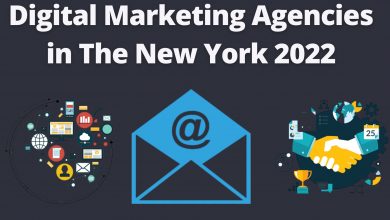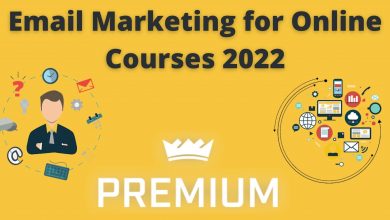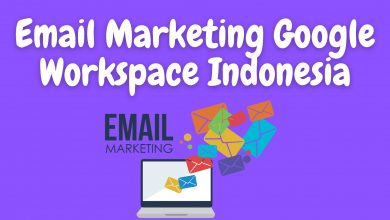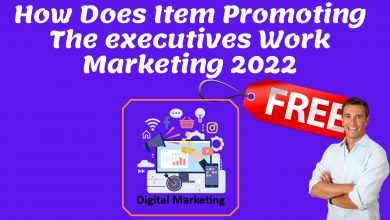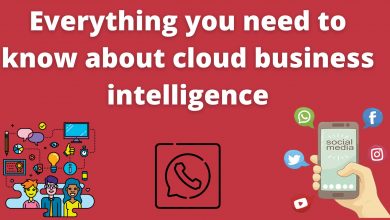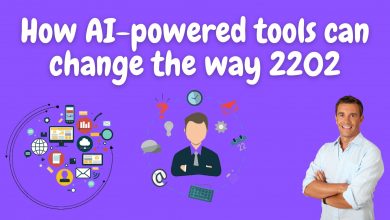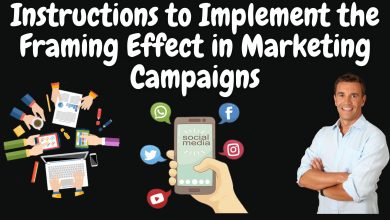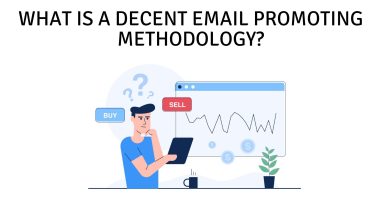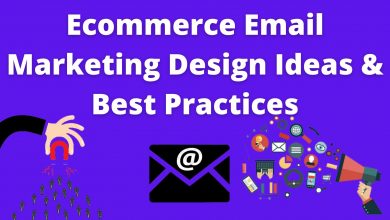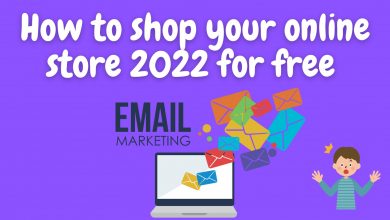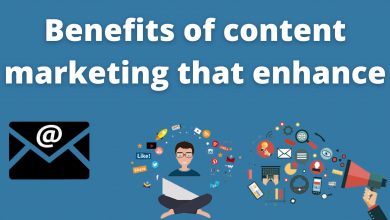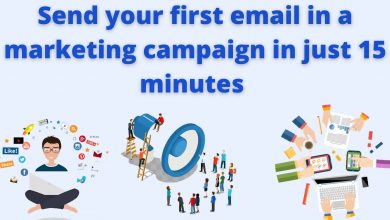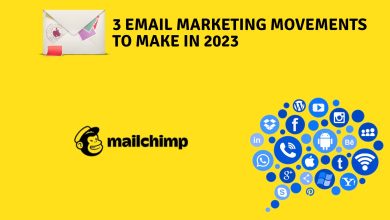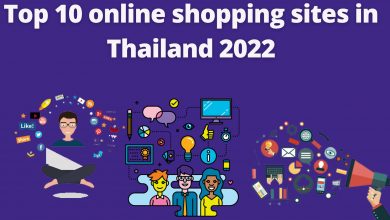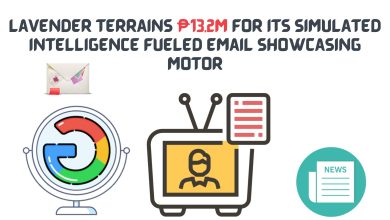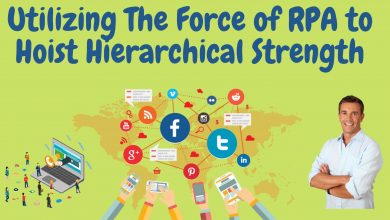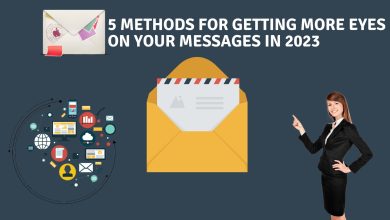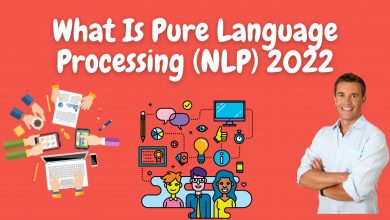The Ten Best Internet Marketing Techniques for 2023
Internet marketing, also known as digital marketing, is the process of promoting products or services using the internet.
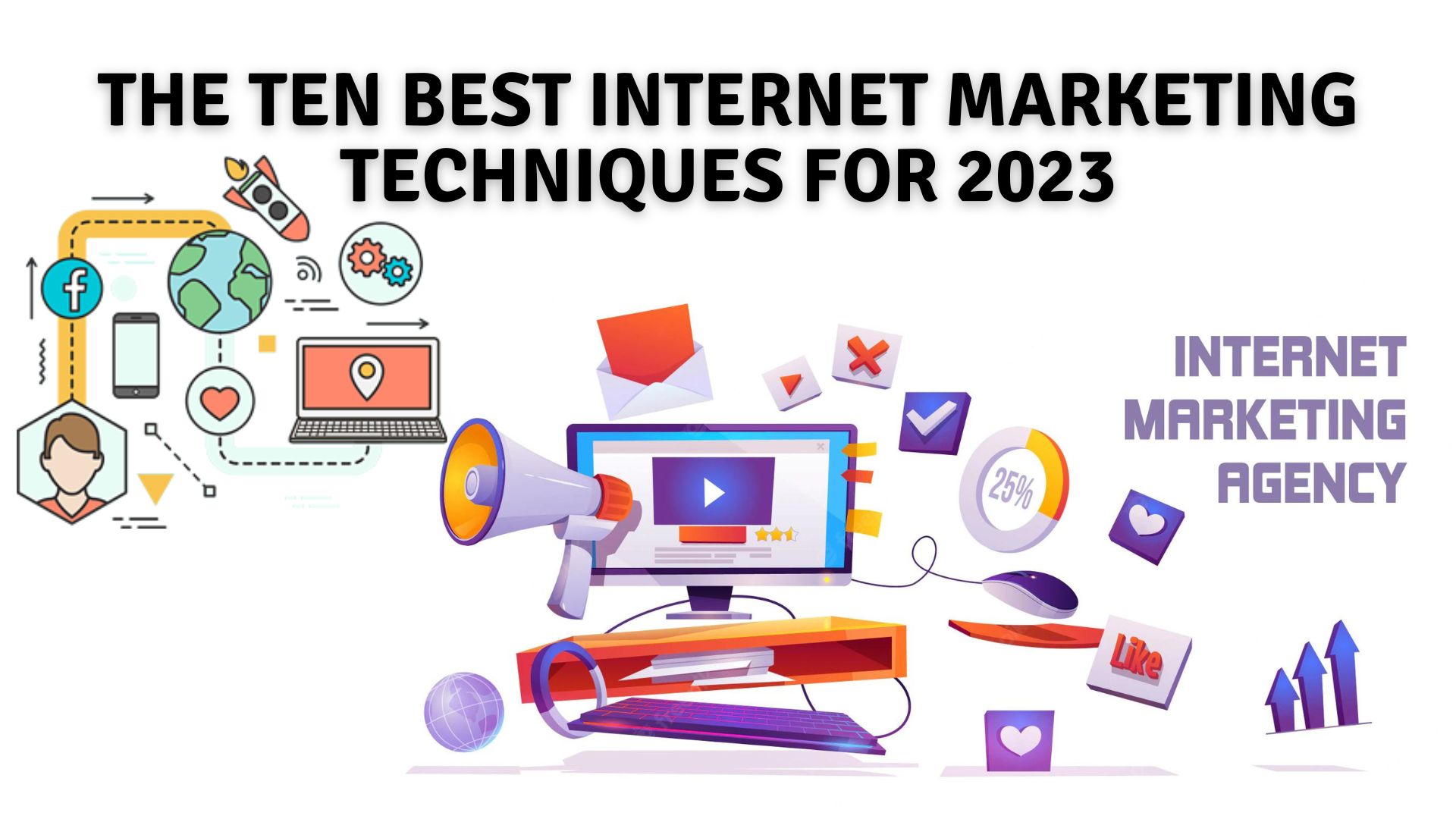
With the increasing use of the internet and the rise of digital technology, it has become essential for businesses to incorporate internet marketing strategies into their overall marketing plan.
Some of the most effective internet marketing strategies include search engine optimization (SEO), pay-per-click (PPC) advertising, social media marketing, content marketing, email marketing, influencer marketing, video marketing, affiliate marketing, and mobile marketing. Each of these strategies has its own unique benefits and can be used in conjunction with one another to achieve the best results.
In this article, we will take a closer look at the top 10 internet marketing strategies and how they can help businesses to reach their target audience and drive more sale
What is internet marketing?
Internet marketing, also known as digital marketing, is the process of promoting products or services using the internet. It encompasses a wide range of tactics and techniques, including search engine optimization (SEO), pay-per-click (PPC) advertising, social media marketing, content marketing, email marketing, influencer marketing, video marketing, affiliate marketing, and mobile marketing.
The main goal of internet marketing is to reach a larger audience and drive more sales by increasing brand awareness, engaging with customers, and building trust and loyalty. It allows businesses to connect with their target audience in a more targeted and cost-effective way than traditional forms of marketing.
One of the key advantages of internet marketing is that it is highly measurable, meaning businesses can track the performance of their campaigns and make data-driven decisions. The ability to track key metrics such as website traffic, conversion rates, and return on investment (ROI) can help businesses to optimize their marketing efforts and see a greater return on their investment.
Internet marketing also enables businesses to reach a global audience and break down geographical barriers, allowing them to expand their customer base and reach new markets. The reach and accessibility of the internet means that businesses can target specific niches and demographics and reach consumers who may have been difficult to reach through traditional forms of marketing.
In general Internet marketing is a way of promoting products and services through the internet by using various methods such as social media, website, email and mobile marketing. The main goal of internet marketing is to increase brand awareness and drive more sales by reaching a larger audience
What are the Internet Marketing Strategies?
Internet marketing, also known as digital marketing, is the practice of promoting products or services using digital technologies, including the internet, social media, search engines, mobile devices, and email.
There are many different strategies that businesses can use to market their products or services online, some of which include:
- Search Engine Optimization (SEO): The practice of optimizing a website to improve its ranking in search engine results pages (SERPs) for relevant keywords and phrases.
- Pay-per-click advertising (PPC): A form of online advertising in which businesses pay a fee each time one of their ads is clicked.
- Social media marketing: The use of social media platforms, such as Facebook, Twitter, and Instagram, to promote a product or service.
- Content marketing: The creation and distribution of valuable, relevant, and consistent content to attract and engage a specific target audience.
- Affiliate marketing: A type of performance-based marketing in which a business rewards one or more affiliates for each visitor or customer brought about by the affiliate’s own marketing efforts.
- Email marketing: The use of email to communicate directly with customers or clients to promote a product or service or build a relationship.
- Influencer marketing: The practice of working with popular social media personalities to promote a product or service to their followers.
- Video marketing: The use of videos to promote a product or service and provide helpful or educational content to the target audience.
These are some of the many internet marketing strategies that businesses can use to promote their products or services online. The right strategy will depend on the type of business, its target market, and its budget.
1. Web Design
Web design is a crucial aspect of internet marketing, as it plays a key role in creating a positive user experience and influencing a potential customer’s perception of a business.
There are several types of web design strategies that businesses can use to create an effective online presence, some of which include:
- Responsive web design: This approach involves designing a website that adjusts its layout and functionality to suit the device it is being viewed on, such as a desktop computer, tablet, or mobile phone.
- Single-page design: A website with a single page, where all the content is consolidated into one scrollable page, rather than multiple pages. This can help with SEO and user experience.
- Minimalistic design: A clean, simple, and uncluttered design that emphasizes the key elements of a website and makes it easy for users to navigate.
- Parallax scrolling design: A technique in which background images move at a slower rate than foreground images, creating the illusion of depth and movement on a website.
- Microinteraction design: The practice of creating small interactions on a website that improve user experience and provide a sense of engagement with the site.
- Interactive design: Design that involves creating a website that is interactive and engaging for the user with elements like animations, forms, and quizzes, that can encourage user engagement.
- Storytelling design: Where website design and content working together to tell a story or convey a message that aligns with the business objectives.
Ultimately, the type of web design strategy that a business chooses will depend on its target market, the goals of the website, and the type of products or services it offers.
The right web design can help a business establish a professional and trustworthy online presence, attract and retain customers, and ultimately drive conversions and revenue.
2. Use Search Engine Marketing and Optimization
Search engine marketing (SEM) and optimization (SEO) are both types of internet marketing strategies that focus on improving a website’s visibility and ranking in search engine results pages (SERPs).
Search Engine Marketing (SEM) involves using paid methods to increase a website’s visibility in search results pages. This can include pay-per-click (PPC) advertising, where businesses pay a fee each time one of their ads is clicked, as well as pay-per-impression (PPI) advertising, where businesses pay a fee each time their ad is displayed. Other forms of SEM include cost-per-thousand (CPM) and cost-per-acquisition (CPA) advertising.
Search Engine Optimization (SEO) on the other hand is a set of techniques used to improve website’s visibility through organic search results. The goal is to increase the website’s ranking and visibility on SERPs, it focuses on increasing the website’s relevance and authority by implementing technical and creative best practices, such as optimizing keywords, meta tags, and content.
This also includes link building, optimization of images, videos, and other media, to improve the website’s relevance to the search engine algorithms.
There are different types of SEO such as:
- On-page SEO: efers to the optimization of the website’s own elements such as title tags, meta descriptions, and content.
- Off-page SEO: Refers to link building activities and other external factors that can affect a website’s ranking.
- Technical SEO: Refers to the optimization of the website’s structure and technical aspects such as website speed, mobile-friendliness and security that can have an impact on SEO ranking.
Both SEM and SEO are important strategies that can help businesses increase their visibility in search results and drive more traffic to their websites. SEM can be useful for businesses that want to achieve visibility quickly, while SEO is a more long-term strategy that focuses on improving a website’s relevance and authority in order to achieve higher rankings in organic search results over time.
3. Pay-per-click advertising
Internet marketing, also known as digital marketing, is the practice of promoting products, services, or brands through various online channels.
There are many different strategies that businesses can use to reach customers and promote their products online, including:
- Search engine optimization (SEO): This involves optimizing a website and its content to rank higher in search engine results pages (SERPs) for relevant keywords. This can help drive more organic traffic to the site.
- Content marketing: This involves creating and sharing valuable, relevant, and consistent content to attract and engage a specific target audience. This can include blog posts, videos, and social media updates.
- Social media marketing: This involves using social media platforms like Facebook, Twitter, and Instagram to promote a business, its products or services, and its content.
- Email marketing: This involves sending promotional emails to a list of subscribers. This can help businesses nurture leads and drive sales.
- Influencer marketing: This involves working with popular social media users to promote a product or service to their followers.
Pay-per-click (PPC) advertising is a popular form of internet marketing in which businesses pay to have their ads displayed on search engines and other websites. With PPC advertising, businesses only pay when a user clicks on their ad.
This can be a cost-effective way to drive targeted traffic to a website and generate leads and sales. Google Ads (formerly Google Adwords) and Bing Ads are two examples of popular platforms for PPC advertising.
4. Reputation marketing
Reputation marketing is a strategy for managing and improving a business’s online reputation. The goal is to create and promote positive content that helps to improve the way a business is perceived by its target audience and the public at large.
This can include managing reviews and ratings on review sites, responding to customer complaints and concerns on social media, and proactively building and promoting positive customer testimonials and case studies.
Reputation marketing can be a powerful tool for businesses of all sizes, as it can help to attract new customers, increase brand loyalty, and improve overall sales. By monitoring and managing online reviews, businesses can identify and address any potential issues before they become major problems. Proactively promoting positive customer experiences can help build social proof and attract new customers.
To implement reputation marketing, a business can:
- Monitor what is being said about the business online
- Engage with customers and address any issues that arise
- Collect and showcase positive customer testimonials and reviews
- Invest in search engine optimization (SEO) to push down negative search results
Reputation marketing should be a long-term and consistent effort to keep a positive image of the business for the target audience.
5. Use Email Marketing
Email marketing is a direct marketing strategy that uses email to promote a product, service, or brand. It’s a cost-effective way to reach and engage with a large audience, and it can be used to build relationships with customers, generate leads, and drive sales.
There are several ways to use email marketing effectively:
- Build an email list: This involves collecting the contact information of people who have shown an interest in your business, and who have agreed to receive promotional emails from you. This can be done through sign-ups on your website or through landing pages or forms.
- Create engaging email campaigns: This involves designing and writing emails that are relevant, interesting, and valuable to your target audience. This can include information about new products or services, promotions, or special offers, as well as helpful tips or educational content.
- Segment your list: By segmenting your email list, you can send targeted and personalized messages to specific groups of people on your list. This can help to increase the effectiveness of your campaigns and improve the engagement of your recipients.
- Use automation: Email marketing automation tools can help you to schedule and send emails automatically based on specific actions or triggers. This can include welcome emails, abandoned cart emails, and more.
- Measure and track results: It’s important to track the performance of your email campaigns so you can understand what’s working and what’s not. Metrics like open rates, click-through rates, and conversion rates can help you to measure the success of your campaigns.
Overall, email marketing is a powerful tool that can help businesses reach and engage with their target audience, build relationships, and drive sales.
6. Social Media presence
Having a strong social media presence can be an important aspect of a business’s digital marketing strategy. Social media platforms like Facebook, Twitter, Instagram, and LinkedIn allow businesses to connect with and engage their target audience in a more personal and direct way.
To build a strong social media presence, a business should:
- Define its target audience: Identify who the business’s ideal customer is and where they are most active on social media.
- Create a content strategy: Develop a plan for creating and sharing valuable and relevant content that aligns with the business’s goals and resonates with its target audience.
- Choose the right platforms: Identify the social media platforms that are most relevant to the business and its target audience. It’s better to focus on a few platforms where the business can build a meaningful presence, rather than trying to be active on many platforms and not effectively leveraging any of them.
- Engage with followers: Interact with followers by responding to comments and messages, and sharing other users’ content. This helps to build relationships and increase engagement.
- Track and measure results: Use social media analytics tools to track key metrics like follower growth, engagement, and conversions, in order to measure the success of the business’s social media efforts and make data-driven decisions on how to improve.
- Advertise: Use social media advertising to reach a larger audience and drive more conversions. It’s an effective way to target specific demographics and interests.
A strong social media presence can help to increase brand awareness, generate leads, and drive sales. By regularly creating and sharing valuable content, engaging with followers, and leveraging social media advertising, a business can build a loyal following and establish itself as a thought leader in its industry.
7. Get Into Articles or News Stories
Getting your business or brand mentioned in articles or news stories can be a great way to increase visibility and credibility, and to build trust with your target audience.
Here are a few strategies that businesses can use to get into articles or news stories:
- Develop a strong story angle: Identify a unique and newsworthy aspect of your business or product, and develop a compelling story angle that will be of interest to reporters and editors.
- Build relationships with journalists: Identify journalists and reporters who cover topics related to your business, and establish relationships with them by providing valuable information and insights, responding to their requests in a timely manner, and being available for interviews or comments.
- Use news releases: Write and distribute news releases that highlight recent developments or newsworthy events related to your business, and make sure to target relevant journalists and news outlets.
- Leverage social media: Use social media platforms like Twitter and LinkedIn to reach out to reporters and journalists, and to promote your business’s story angles.
- Participate in online conversations: Join online conversations related to your business or industry, and provide valuable insights and expertise. This can help to build your brand as an authority and increase the chances of being mentioned in articles or news stories.
- Utilize Paid Media: You can work with PR agencies, press release distribution companies to have your press releases to be covered by reputable media outlets.
Keep in mind that getting into articles or news stories takes time and effort, and there are no guarantees. By following these strategies, however, and by consistently providing value and being responsive to journalists, a business can increase its chances of being mentioned in the press.
8. Influencer marketing
Influencer marketing is a type of digital marketing that involves working with popular social media users, known as influencers, to promote a product or service to their followers.
Influencer marketing can be an effective way to reach a large and engaged audience, as influencers often have a significant following on social media platforms such as Instagram, TikTok, YouTube, and Twitter. They can help to increase brand awareness, generate leads, and drive sales.
There are a few different ways businesses can utilize influencer marketing:
- Sponsored posts: Influencers can create sponsored posts on their social media profiles that feature a business’s product or service. These posts can include photos, videos, and written content that promotes the product or service to the influencer’s followers.
- Product reviews: Influencers can review a product or service and share their thoughts and experiences with their followers. This can help to build trust and credibility for the product or service.
- Giveaways and contests: Influencers can run giveaways and contests on their social media profiles that feature a business’s product or service as a prize. This can help to increase engagement and drive more traffic to the business’s website.
- Ambassador programs: Some businesses may establish an ongoing partnership with an influencer, where the influencer serves as an “ambassador” for the brand and promotes the product or service over time.
- Micro-Influencers: Instead of working with a few big names, companies can work with micro-influencers. They have a smaller audience but they have a highly engaged niche audience. They tend to have a higher conversion rate, and it’s more affordable.
To effectively use influencer marketing, it’s important for businesses to choose influencers who align with their brand and target audience, and to clearly communicate the objectives and expectations for the partnership. Additionally, it’s important to have a well-defined process for measurement and evaluation of the campaign’s results.
9. Retargeting
Retargeting is a form of online advertising that allows businesses to target users who have previously interacted with their website. This is typically done by placing a small, unobtrusive piece of code (often referred to as a “pixel”) on a website, which then allows the business to collect data on the actions of users who visit the site.
This data can then be used to create targeted ads that are shown to those users as they browse other websites. Retargeting can be an effective way for businesses to drive conversions and increase sales, by reaching users who have shown an interest in their products or services.
10. Maintain a Blog
Maintaining a blog is an important internet marketing strategy that can help businesses increase visibility, drive traffic to their website, and establish themselves as thought leaders in their industry. By creating high-quality, informative, and engaging content on a regular basis, businesses can attract new visitors to their website, build relationships with existing customers, and improve their search engine rankings.
Having a blog is a great way to showcase the expertise and knowledge of a business, by providing valuable information and insights on industry-related topics. A blog can be used to inform, educate, and entertain readers, by covering topics such as product reviews, tutorials, industry news, and personal stories.
Blogs also provide great opportunities for businesses to connect with their audience by allowing commenting and building a community around it. The blog can be a great way to interact with customers, gather feedback and also get suggestions.
Additionally, blog posts can be easily shared on social media, which can help businesses reach a wider audience and generate more leads. It can be an effective way to drive organic traffic to a website and even use it as a way to convert visitors into paying customers.
In summary, maintaining a blog is a powerful internet marketing strategy that can help businesses increase visibility, build relationships with customers, and establish themselves as thought leaders in their industry.
Conclusion
In conclusion, internet marketing is constantly evolving and new strategies and trends are emerging every year. However, there are some strategies that are proven to be effective and are likely to continue to be effective in 2023 and beyond.
Some of the top internet marketing strategies for 2023 may include:
- Search Engine Optimization (SEO) – Optimizing websites for search engines to increase organic traffic and improve search engine rankings.
- Content Marketing – Creating and distributing valuable, relevant, and consistent content to attract and engage a clearly defined audience.
- Social Media Marketing – Building and engaging with a community on social media platforms to increase brand awareness and drive traffic to a website.
- Email Marketing – Sending targeted and personalized emails to a specific audience to build relationships and drive conversions.
- Influencer Marketing – Collaborating with influencers to reach a wider audience and increase brand visibility.
- Video Marketing – Creating and distributing engaging video content to increase brand awareness and drive conversions.
- Pay-Per-Click (PPC) Advertising – Running ads on search engines and social media platforms to drive targeted traffic to a website.
- Retargeting – Targeting users who have previously interacted with a website to increase conversions and drive sales.
- Chatbots – Using AI-powered chatbots to provide instant customer service and drive conversions.
- Maintaining a blog – Providing valuable content, building a community and driving organic traffic to the website
[box type=”note” align=”” class=”” width=””]However, it’s important to remember that the success of any internet marketing strategy depends on the specific goals and objectives of a business, the target audience, the competition, and the resources available. Therefore, it’s always best to test different strategies, measure the results and optimize accordingly.[/box]
